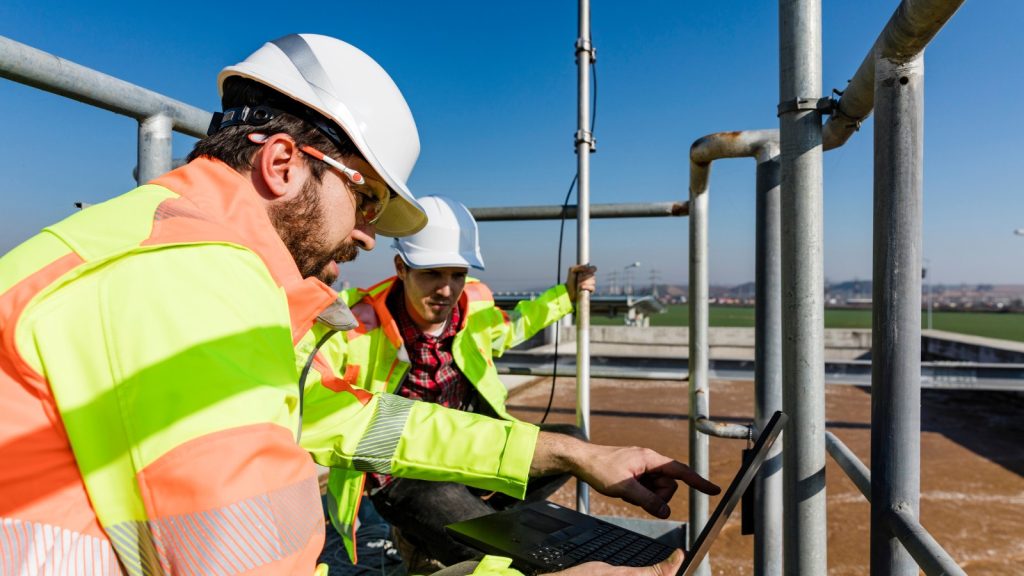Sewage treatment, or, in other words, wastewater treatment, has been a popular concept in Australia as it serves a considerable amount of the country’s water requirements. This is why Australian authorities put as much heavy weight on the wastewater industry as they do on the water industry. Recycled water is used for many purposes in Australia. However, treating sewage is not a simple thing, as it demands high levels of technology and knowledge on each layer of the operational floor.
In this article, we talk about the main components of an effective sewage treatment plant and the mechanism behind it.
What is Sewage Treatment?

- First, we will know what sewage treatment is.
- This is the process of treating industrial wastewater to remove dangerous pollutants and chemicals before their release into the environment.
- You know that unchecked or untreated industrial sewage can have a negative impact on the environment, public health, and the economy. This is why not only Australia but all the countries that rely on wastewater pay attention to making sewage into well-treated water for different objectives.
- However, as we said before, it is not something a government or authority should take lightly. This is why industrial sewage treatment facilities employ physical, chemical, and biological processes tailored to the type of industry and contaminants present. Through sedimentation, filtration, and disinfection, impurities and pollutants can be eliminated. This will reduce pollution and prevent waterborne diseases.
- This ensures that the effluent meets stringent quality standards, safeguarding water resources and minimising harm to aquatic life. Likewise, effective sewage treatment not only protects public health by preventing exposure to harmful pathogens and toxins but also reduces healthcare costs associated with waterborne illnesses.
- So, what would be the final benefit? As you can see, it contributes to a healthier environment and sustains clean water resources essential for various industrial, agricultural, and domestic purposes within the Australian water supply ecosystem.
The Main 5 Components of an Effective Sewage Treatment Plant

Pretreatment
Every process has to be started somewhere. This is where the pretreatment begins. It is a vital component of an industrial sewage treatment plant, serving as the initial stage in the treatment process.
During pretreatment, wastewater undergoes screening to eliminate large solid materials like plastics, rocks, and rags, which could cause blockages and damage downstream equipment such as pumps.
Also, grit and sand are removed to prevent wear and tear on equipment. This process is necessary to protect downstream infrastructure and ensure that the wastewater can be effectively treated in subsequent stages.
Now you may understand why such an initial process is much needed, right? The basic reason is undoubtedly that, by effectively removing these impurities, pretreatment safeguards the treatment plant’s efficiency and longevity in the first place.
This will ultimately ensure that the wastewater can be treated effectively before its discharge. This means one measure taken to protect the environment and public health under a magnifying glass.
Biological Treatment
Biological treatment, constituting the second stage of the sewage treatment process, relies on microorganisms like bacteria, fungi, and protozoa to break down organic matter in wastewater.
Operating within tanks or bioreactors, these microorganisms consume organic pollutants. It will reduce them to simpler compounds like carbon dioxide and water.
This breakdown not only diminishes the amount of organic matter but also produces by-products essential for microbial growth.
What is the purest expectation hidden in this process? Let us explain this more deeply. This process significantly reduces the organic load, making subsequent stages of treatment easier and more effective.
Biological treatment encourages the natural capabilities of microorganisms to efficiently treat sewage, and this will contribute to the overall purification of wastewater before its discharge into the environment.
Chemical Treatment
Chemical treatment, the third stage in the sewage treatment process, involves the use of various chemicals to address specific contaminants remaining after biological treatment. It is unnecessary to say that this is the most vital aspect of the sewage treatment procedure.
Now we will focus on how this occurs within a plant. You know that chemicals like coagulants and flocculants aid in the removal of suspended solids and organic matter, while disinfectants target bacteria and pathogens to meet quality standards for discharged wastewater.
On the other hand, nutrients such as nitrogen and phosphorus may be controlled to prevent environmental imbalances. However, chemical treatment presents challenges due to the precise dosing required for effective treatment without causing harm to the environment.
Balancing the need for thorough purification while minimising the impact of chemical residues on aquatic ecosystems is the most important yet difficult factor here.
However, achieving this balance ensures that treated wastewater meets the necessary quality standards before being discharged into the environment.
It is highly vital for safeguarding both public health and ecological integrity.
Filtration
It is common that filtration pops up straight away in our minds when we think of sewage treatment. However, as you can see, this stage comes on the fourth.
Yes, in the fourth stage of the sewage treatment process, chemical treatment is complemented by filtration. The latter serves as a crucial component to effectively remove remaining suspended solids and contaminants.
This is a bit of a complex execution as it demands the utilisation of some materials, such as sand and gravel. With them in use, filtration systems physically filter out impurities, ensuring the treated wastewater is clear and free from visible particles.
This near-final stage of treatment is essential for achieving water quality standards before discharge into the environment. However, we have to admit that it presents some challenges. Authorities might have them, particularly in maintaining the efficiency and longevity of filtration systems.
How can we prevent these challenges at this stage? Continuous operation and periodic maintenance are necessary to prevent clogging and ensure consistent performance. Additionally, variations in influent water quality and flow rates can impact filtration effectiveness, requiring adjustments and careful monitoring.
Despite these challenges, filtration remains an indispensable step in sewage treatment. It contributes to the production of clean water that meets regulatory standards and supports environmental sustainability in the Australian wastewater realm.
Disinfection
Here we come to the final stage.
In the final stage of the sewage treatment process, chemical treatment is pivotal for disinfection. Let us explain why. It ensures the removal of bacteria and pathogens from treated wastewater before discharge into the environment.
Chemicals such as chlorine, ozone, or ultraviolet light are commonly used to effectively kill remaining microorganisms, rendering the water safe for both the environment and public health. This step is indispensable, as it acts as a safeguard against the spread of waterborne diseases and protects aquatic ecosystems.
Discharging inadequately disinfected wastewater can pose significant risks to public health and the environment by contaminating water bodies and jeopardising ecosystem balance.
This is the key reason why the disinfection stage is essential and cannot be skipped in sewage treatment processes.
In one way, it ensures that the treated wastewater meets stringent quality standards, and in another way, it promotes environmental sustainability and safeguards the health of communities reliant on clean water sources.
Making Sewage Treatment Effective with Modern Tools

Now you might understand that sewage treatment is not just one complete network; it consists of different, important components, as we discussed above. One tiny error in just one tiny step of these stages will lead to major quality breaches, and ultimately, it will endanger the end-users. This is why wastewater treatment plants must include robust technology and modern tools. With the right consultation from an industry expert, this is another strategy to optimise these key components.







